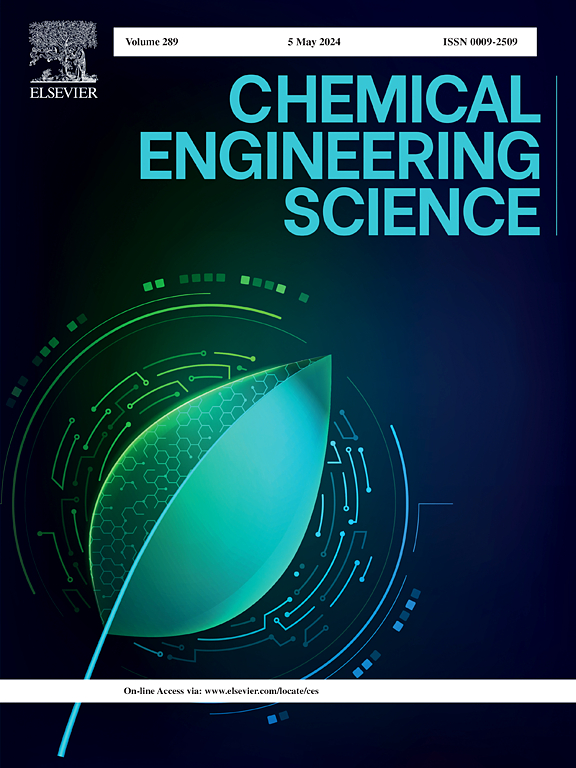用两相晶格玻尔兹曼模型描述考虑毛细凝聚和传热影响的受限纳米流输运
IF 4.1
2区 工程技术
Q2 ENGINEERING, CHEMICAL
引用次数: 0
摘要
采用伪势两相晶格玻尔兹曼方法,通过施加压力梯度,研究了8 ~ 24 nm宽狭缝内的冷凝蒸发流动。这些缝隙大约有700纳米长。卡纳汉-斯塔林状态方程所描述的流体是以孔隙上游的蒸汽形式存在的。对于较小的施加压力梯度,蒸汽通过狭缝流动。然而,对于较大的压力梯度值,当气体流过狭缝时,流体凝结,因此,液体流过狭缝。液体可能会离开缝隙,或者蒸发掉。在这里,研究了液体和气体流动区域之间的界面条件,在那里通过蒸发进行传质。曲线半月板上的压差符合Young-Laplace方程,且几乎与质量流量无关。然而,界面的曲率取决于流体-壁相互作用的强度。半月板的曲率和影响曲率的各种因素在这一过程中起着重要的作用。考虑输运过程中的温度场,揭示了不同边界条件对质量流率的影响。从下游加热狭缝降低了质量流量。本文章由计算机程序翻译,如有差异,请以英文原文为准。

Description of confined nanoflow transport considering the effects of capillary condensation and heat transfer by means of a two-phase lattice Boltzmann model
The pseudopotential two-phase Lattice Boltzmann method is used to study a flow with condensation and evaporation through slits ranging between 8 to 24 nm in width by applying a pressure gradient. The slits are about 700 nm long. The fluid described by the Carnahan-Starling equation of state is in the form of a vapor upstream of the pore. For the smaller applied pressure gradient, the vapor flows through the slit. However, for higher values of the pressure gradient, as the gas flows through the slit, the fluid condenses, and consequently, liquid flows through the slit. The liquid may leave the slit, or it evaporates. Here, the condition at the interface between the liquid and the gaseous flow region, where mass transfer by evaporation takes place, is investigated. The pressure difference across the curved meniscus is consistent with the Young-Laplace equation and nearly independent of the mass flow rate. However, the curvature of the interface depends on the strength of the fluid-wall interaction. The curvature of the meniscus and effects influencing the curvature play an important role in the process. Considering the temperature field in the transport process reveals that different boundary conditions for the domain influence the mass flow rate. Heating the slit from the downstream side decreases the mass flow rate.
求助全文
通过发布文献求助,成功后即可免费获取论文全文。
去求助
来源期刊

Chemical Engineering Science
工程技术-工程:化工
CiteScore
7.50
自引率
8.50%
发文量
1025
审稿时长
50 days
期刊介绍:
Chemical engineering enables the transformation of natural resources and energy into useful products for society. It draws on and applies natural sciences, mathematics and economics, and has developed fundamental engineering science that underpins the discipline.
Chemical Engineering Science (CES) has been publishing papers on the fundamentals of chemical engineering since 1951. CES is the platform where the most significant advances in the discipline have ever since been published. Chemical Engineering Science has accompanied and sustained chemical engineering through its development into the vibrant and broad scientific discipline it is today.
 求助内容:
求助内容: 应助结果提醒方式:
应助结果提醒方式:


